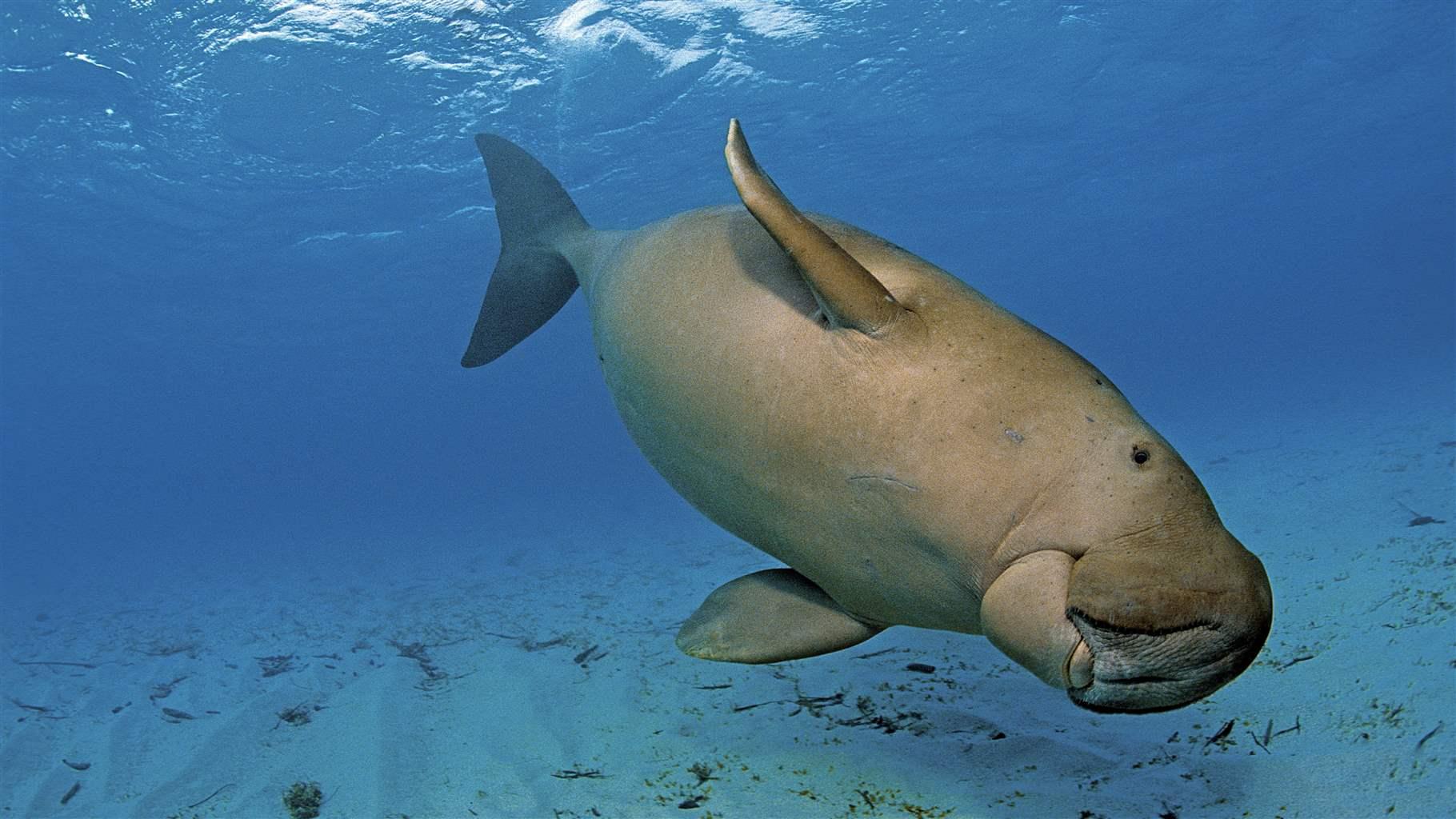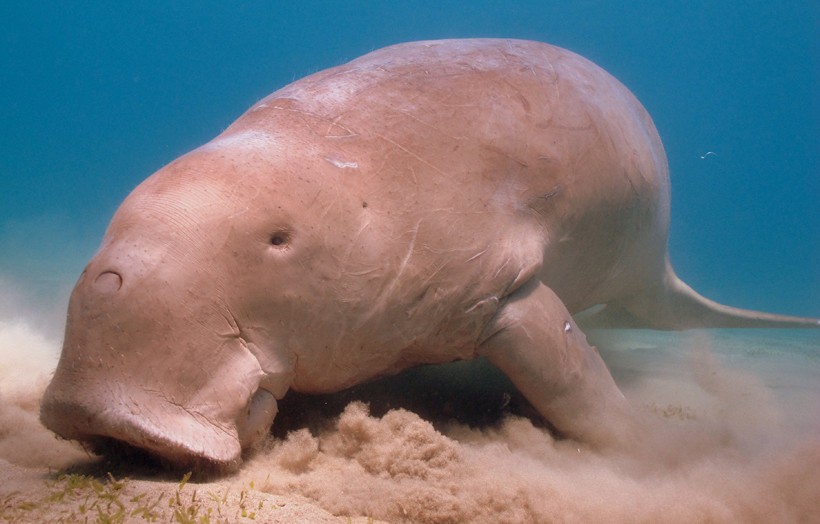Last post, I mentioned that the Titicaca water frog represents an unattainable skill that I would love to have: the ability to freely explore underwater. The mystery and unknown of the world’s waterways are still on my mind. The ocean is truly a place of unexplored wonder. For centuries, sailors have looked out upon the sea and pondered what lies beneath its murky depths. This spawned tales of mystical creatures and supernatural beings that helped sailors grasp the unknown. Perhaps the most recognizable of these myths is that of mermaids. Surprisingly, mermaids are thought to have a basis in reality. That reality is our threatened ugly animal this week.

The dugong. Image Source.
Meet Dugong dugon, simply referred to as the dugong. Clearly, these hulking creatures are far from Ariel. These mammals grow 8 to 10 feet long and weigh up to 1,100 pounds. They can live up to 70 years in the wild. Relatives of manatees, dugongs live in warm coastal waters throughout East Africa, South Asia, and Northern Australia. However, unlike manatees, dugongs are not able to hold their breath for long. They can make dives of about six minutes before surfacing for air. I timed myself while writing and I got to a minute and a half, so I still have a ways to go if I even want to explore freely with the ability of a dugong.

Dugong foraging. Image Source.
The dugong has been nicknamed by many as the “sea cow”, for good reasons. This moniker goes beyond the animal’s girth and plain looks. These behemoths are also different from manatees in that they remain in saltwater year round, spending nearly all of their time near beds of sea grass. With their strong snout, dugongs sift through the grass beds chomping copious amounts of plants. The specially evolved bristles on their lip and nose allow them to both find and grasp more grass. Their eating habits are so voracious that they leave trails in the sand. Dugongs spend most of their time alone or in pairs. They can occasionally be found in packs with dozens of individuals.
Mother dugongs can give birth to a single calf after a full year pregnancy. She then spends another 18 months raising her child. While this reproductive strategy makes for strong calfs and long lifespans, it makes the dugong extremely vulnerable to change. Increased human activities, such as water pollution and land development, degrade the sea grass beds dugongs need to survive. Their laid-back attitudes also make them susceptible to human hunting, though they are protected throughout their natural range. The IUCN Red List shows the species is vulnerable with a decreasing population trend. It is already gone in certain locations.

Dugong and a calf. Image Source.
The dugong used to have a relative in its taxonomic family, Dugongidae. The Steller’s sea cow, which was even larger than the dugong, was hunted to extinction in the 1700s. Now alone, the dugong stands as a testament to the immediate impact humans can have on threatened species.
Cover Image Source.

Leah Mathews October 1, 2020
Woah! It’s so cool how you’re looking into all these animals that most people have never heard of any certainly are ugly haha. Personally, I don’t like the ocean (cuz I’m scared of it) so I would not like to swim and hold my breath for any extended amount of time but it’s cool that the dugong can do it. It’s fun to learn some new stuff about an animal I’ve never heard of so thanks!
Supriya Kumar October 4, 2020
Like last week’s frog, I find this creature to also be very cute, which goes to show how arbitrary beauty is. It’s incredibly upsetting to hear about how endangered these creatures are because of humans.
kab7088 October 5, 2020
I actually find this creature to be very cute. I have seen images of this animal before and never would have known they are close to extinction. It is also interesting but sad to know that they had a species in their family that has already gone extinct.